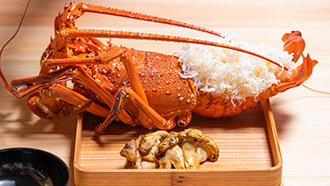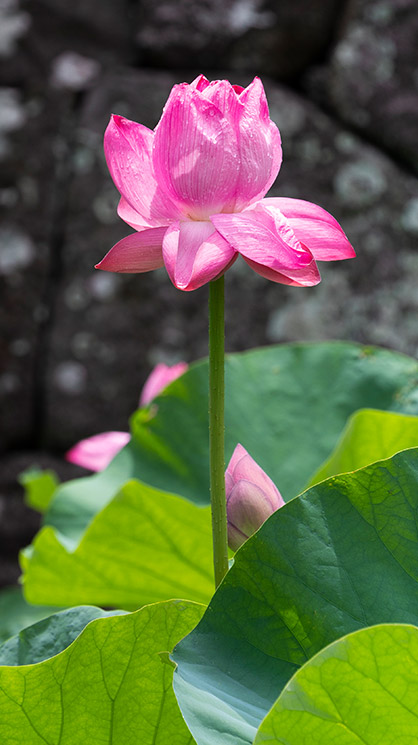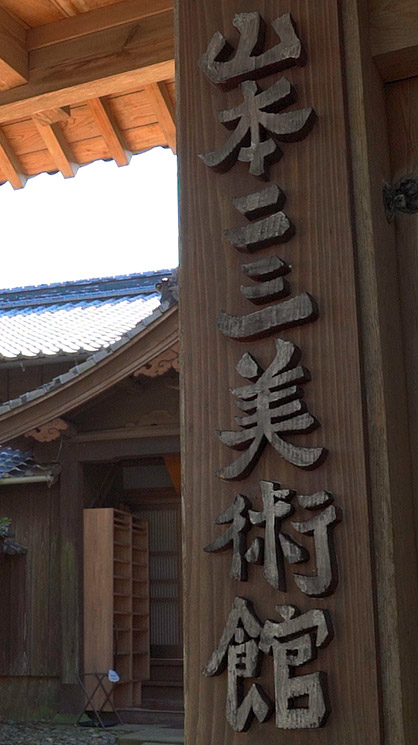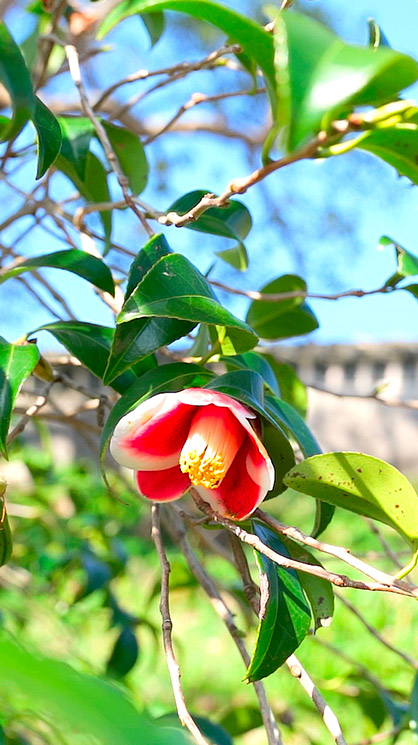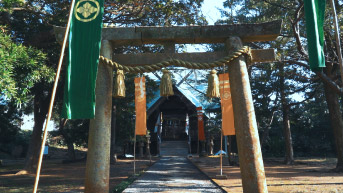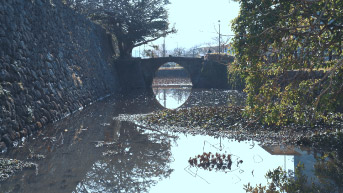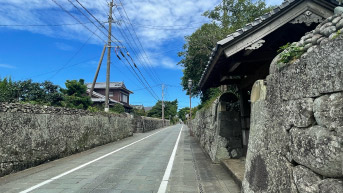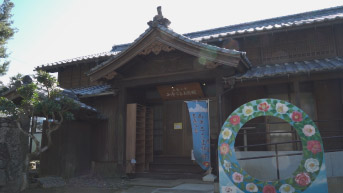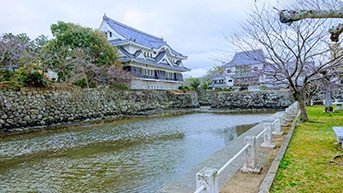




- Date and Time
- January 21 (Sun.), 22 (Mon.), 23 (Tue.), 2024
- Venue
- Nagasaki, Goto City, Goto Family Garden, Shinjigaike Pond
(Please meet at the site on the day of the event.)
- Contents
-
・Enjoy Shinjigaike Pond and Garden of the Goto family
・Lecture by Noriaki Goto, 35th Generation of the Goto family
・Dinner (160th anniversary special menu)
・Kagura Show
- Number of participants
- Minimum number of participants: 6 persons to 12persons
The 2273㎥ Egawa Castle was constructed under the supervision of Morisada Uku, the 17th lord of the Goto family. It was destroyed by a fire after succession to the 22nd lord, Moritoshi Goto. A temporary encampment was built at Ishida Beach, designed by Shimanokami Hirotaka Terazazwa, lord of Karatsu Castle. Later, as the frequency of foreign ships increased, a greater need to defend the area emerged, leading to proposals to expand the scale of the Ishida encampment. Appeals were made to the shogunate to build Fukue castle, the castle walls and gates during the time of the Moriyuki Goto (28th generation), Morishige Goto (29th generation) and Moriakira Goto (30th generation). Castle construction began immediately after Morinori Goto (31st generation) received permission to begin construction in 1848. The castle was completed 15 years later in 1863, involving 50,000 workers at a cost of 20,000 ryo. The castle is a unique seaside castle, surrounded by the sea on 3 sides. It boasts a perimeter of 1,346 meters, measuring 291 meters from east to west. It was the final castle built during the Edo Era. Only 9 years after its construction and after the start of the Meiji Restoration, the castle was dismantled. Goto High School currently stands in the location of the inner citadel. Shiroyama Shrine, dedicated to the ancestors of the Goto family, a culture hall, and a historical museum stand in the area of the outer citadel. The Kedashi gate, stone bridge, castle walls and moat remain at the west end of the castle, reminding passersbys of these ancient times.
(Information from the Goto City Tourist Association Fukue Castle Ruins Pamphlet)
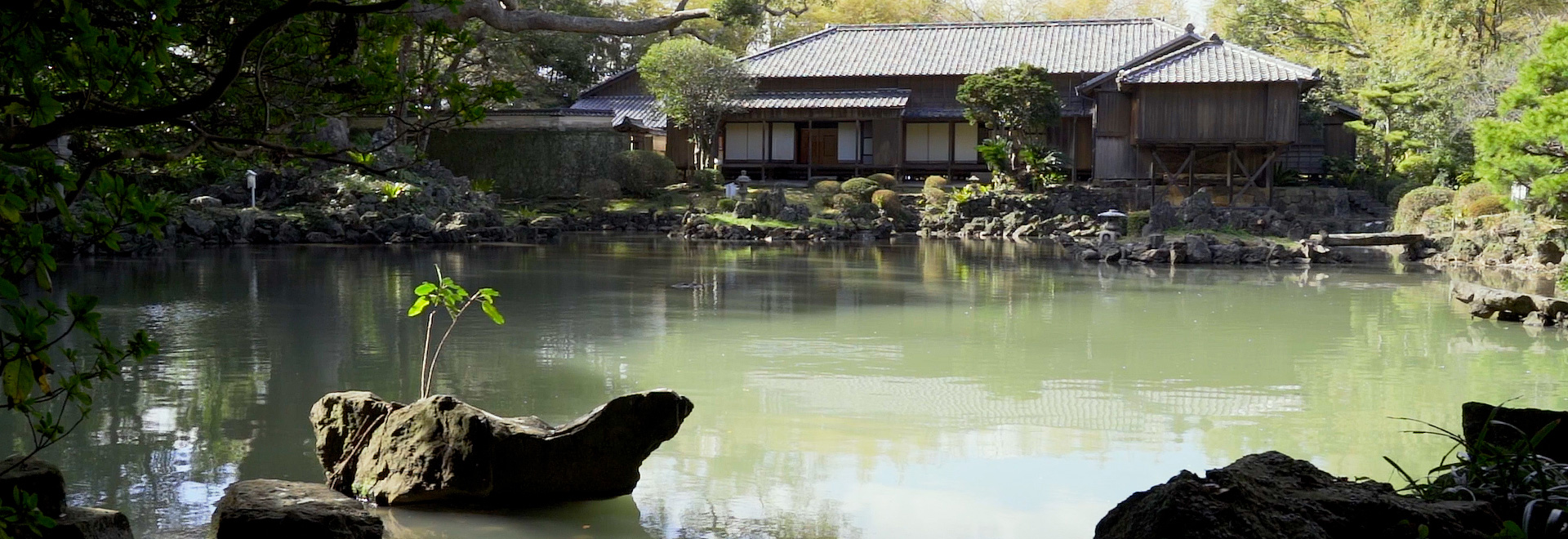
This hidden palace was designed by Moriakira, the 30th generation of the Goto family, and was built within Fukue Castle over a period of two years from 1858.
The beautiful rinsen-style garden is modeled after the circular pond of Kinkakuji Temple.
Lava rocks from Mt. Onidake were gathered to be used as garden stones. The pond’s shorelines, small island, and artificial hill’s peak were constructed to resemble the head of a turtle, which was the favorite animal of Moriakira Goto.
In November 1991, it was designated as a national garden within the castle. It is one of the few examples of such gardens to be preserved in Japan.
Fukue Castle and its surrounding area offer visitors rare views and unique cultural experiences in Japan. The castle walls and moat still retain the appearance of long ago. Goto High School stands on the ruins of the castle's inner citadel. The houses along the samurai street still have small stones piled up along their outer walls. There is also a sightseeing and historical museum that introduces the history of Goto. These spots are located within walking distance of each other and can be easily visited on foot. Enjoy taking a stroll around this area and imagining the rich history of those ancient times. Please take your time and fully enjoy the unique charms of this area.
Click here for more informationabout each spot

The Goto Islands are remote islands located 100 km west of Nagasaki, Kyushu.
Goto City, where Fukue Castle is located, is in the southern part of the Goto archipelago. You can come to Fukue Island by plane or ship.
-
From Nagasaki.
・1 hour and 25 minutes by high-speed boat shortest route)
・3 hours and 10 minutes minimum by ferry (shortest route)
・Approx. 30 minutes by airplane. -
From Fukuoka.
・Approximately 8 hours and 30 minutes by ferry.
・Approximately 45 minutes by airplane.
Click here for ship information
Kyushu-shosen (Nagasaki ~ Goto)・Nomo-shosen (Fukuoka ~ Gotō)


